If you click that "skip opening credits" button, you're bypassing the essence of this entire article, because our sole focus is the captivating world of opening credits.
The first article has already analyzed the opening credits of Succession, The Good Fight, and The White Lotus. Next, we will continue analyzing the opening credits of five other TV series.
4. True Detective
Double Exposure
The opening sequence of "True Detective" goes beyond mere footage from the show itself. It incorporates a powerful visual element: the desolate and decaying landscapes of the Louisiana Gulf Coast, portraying a state of torment, contamination, and destruction. These landscapes serve as a metaphor for the characters in the series, who are similarly tormented, contaminated, and fragmented.
What truly showcases the brilliance of the opening sequence is the double exposure. Within the silhouettes of the characters, we see chemical plants, overpasses, forests, and parking lots, all evoking a sense of decay and deterioration. Through the double exposure technique, the landscapes take on a darker and more gloomy appearance, engulfing the characters in an aura of darkness. It's as if their inner selves are intertwined with these scenes, reflecting their struggles and conflicts.
As the sequence progresses, this darkness intensifies and culminates in a raging fire that consumes all the decay and desolation. While the opening sequence of "True Detective" doesn't reveal specific plot details, its deeply somber mood can captivate viewers, drawing them into a collapsed world alongside the characters, even without watching the actual episodes.
5. Narcos
The True History
A good opening sequence can tell a complete story, just like in "Narcos." It starts with elements of the periodic table overlapping with archival footage, unveiling a long-forgotten past.
Inside a suitcase, bags of white powder appear, and in the next scene, there is a box full of cash. Fully armed soldiers guard the white powder. The drugs turn into money, more and more money, which then becomes extravagant indulgence—a scene of sensual allure with dimly lit rooms and seductive lips gently biting into flames. Following that is the vintage VHS-like footage depicting scattered drugs, a gang on wheels, villages burning in flames, and armed forces dominating the streets. It is the kingdom tainted by drug lords, where violence reigns.
Some of the footage is from the actual series, while others were specifically shot for the opening sequence. However, most importantly, there are several authentic historical images interspersed throughout, including photographs of the drug lord Pablo Escobar himself, his Hacienda Nápoles estate, and the attack on the Colombian Palace of Justice. The inclusion of real footage creates a subtle psychological impact—a person with the same two eyes and one nose dictating the fate of a nation, watering their extravagant lifestyle with that white powder while draining the entire country, leaving behind widespread devastation.
Towards the end of the opening sequence, a burning car is shown, symbolizing the impending doom and the price that must be paid, the true cost of this way of life.
6. Breaking Bad
Wordplay
The opening credits of Breaking Bad are so concise that they end before you have a chance to "skip" them. Though simple, they are cleverly crafted, showcasing the essence of simplicity at its best.
There are no characters or landscapes; instead, the opening credits feature only the periodic table of chemical elements, symbolizing the dual identity of Walter White, the chemistry teacher turned methamphetamine manufacturer. However, the element Bromine (Br) at position 35 and Barium (Ba) at position 56 are singled out, forming the English title "Breaking Bad." Similarly, the letters "Cr" from "Created" are framed around the element Chromium (Cr) at position 24.
Several opening credits engage in wordplay. For example, in "Stranger Things", the title is presented in a neon light tube style, evoking a nostalgic 1980s atmosphere. Another example is "Loki," where the word "Loki" rapidly transforms through different fonts, symbolizing the varied versions of Loki across different parallel universes, with all sorts of peculiarities, genders, and forms, be it human or alligator.
7. Westworld
Manufacturing AI
From the first glance at the opening credits of Westworld, a sense of eeriness arises. "Westworld" is a world where "all cruel pleasures ultimately end in cruelty," yet its opening credits show no signs of such cruelty. The robots are sculpted and assembled, born from a milky thick liquid, and play the piano in solitude. They seem to be manufactured in a sterile environment, orderly, precise, without any redundancy, exuding a complete sense of coldness. Considering that they are destined to be sent to the wild west world, where they will endure killings and rapes, the opening credits appear even more bizarre and chilling.
The production cost is also remarkable. Although the robot production in the opening credits adheres to many details from the actual series, such as robotic arms and milky liquid, the specific visuals were entirely remade for the opening credits.
In the second season, the opening credits adopt a similarly cold and distant style and introduce more symbolic images, such as an eagle representing fierce slaughter and a dandelion representing uncertain fate. The craziest part is the third season, where the original white tone is replaced by a screen filled with blood red, giving an invigorating and alerting sensation, as if a great slaughter is about to unfold.
Moreover, the opening credits of the third season mark the first time "Westworld" utilized AI-generated imagery. It's a television series about the human enslavement of AI, using AI to create its opening credits! Even I, myself, would rebel against such a concept.
8. Game of Thrones
Breaking the Cliché
When it comes to the opening credits with the greatest cultural impact, it has to be "Game of Thrones." If you hum its theme song, don't you immediately start singing along and envisioning the sprawling map of Westeros?
The opening credits of "Game of Thrones" skillfully avoid clichés and overused conventions. When deciding to showcase the map of Westeros, they deliberately discarded the old parchment scroll style. Instead, they opted for a 3D map with materials like metal, leather, wood, and glass, creating a steampunk effect. This may sound daring because 3D and steampunk, with their slight sci-fi elements, don't seem to match the medieval backdrop of "Game of Thrones." However, the creative team behind the opening credits drew inspiration from Leonardo da Vinci's inventions, magically blending the medieval ambiance with this steampunk map.
In terms of music, the showrunners, David Benioff and D.B. Weiss, specifically instructed composer Ramin Djawadi not to use flutes. Flutes have become a common choice for fantasy genres, and it feels like your ears are sprouting elven leaves. Instead, the main instrument in the opening credits became the cello, somber and grand. No matter how much you may dislike the show's controversial final season, they got this one right.
Thus, the iconic opening credits of "Game of Thrones" were born. Gears turn like intricate clocks, and the castle of King's Landing rises amidst the rotation. The camera zooms out to Winterfell, where the branches of the trees unfold, then to the Wall, and finally to Dorne. Each season, the significant locations of the story gradually appear. Moreover, there are subtle changes every few episodes. For instance, when House Bolton occupies Winterfell, the dire wolf on the Stark sigil on the map transforms into the emblem of House Bolton, adapting to the changing locations relevant to the story.
The audiovisual elements of the opening credits of "Game of Thrones" are flawless. If there's anything not good, it would be the disastrous final season.















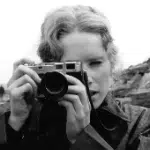

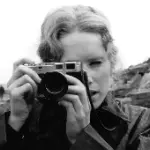










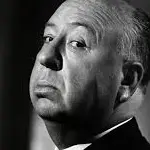







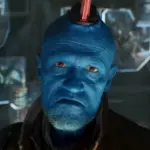




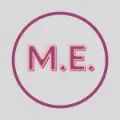






Share your thoughts!
Be the first to start the conversation.